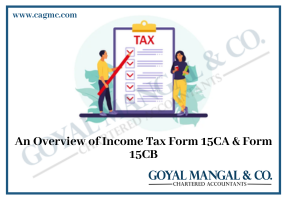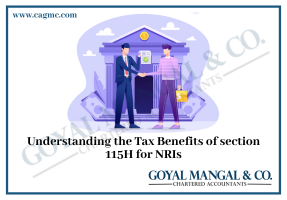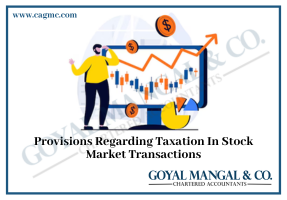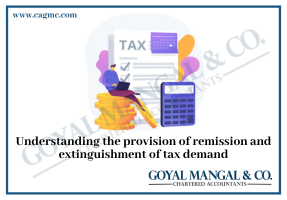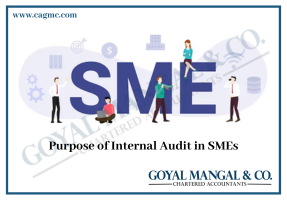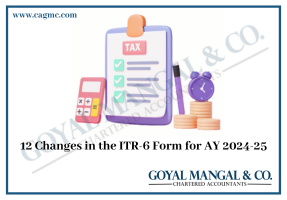
Within the complex field of taxation, the Income Tax Appeal to CIT (A)Commissioner of Income Tax Appeals plays a vital role as a means for taxpayers to seek resolution and justice. This pathway offers individuals and businesses a chance to address and correct decisions made by lower authorities, when dealing with the intricate aspects of tax disputes. When taxpayers begin this journey of appeal, they immerse themselves in a process that requires clear, accurate, and a detailed comprehension of tax rules and regulations.
| Table of Contents |
Overview
If a taxpayer is dissatisfied with the decision of a particular authority, then they have the option to appeal to the higher authority, so when an order made by lower authority bought to higher authority by the complainant it refers to an Appeal. A person needs to file a formal complaint before a higher authority against the ruling made by administrative authority.
The individual accuracy and the determination of the correct tax liability filing by the taxpayer is often taken care by assessing officer, so they play a crucial role of verifying the filed returns accurately. Also, the AO has the authority to examine instances of suspected tax avoidance, assess tax liability, and enforce penalties.
The taxpayer always has the right to appeal to higher authority that is if dissatisfied with the decision of the Assessing Officer the appeal will be made to Commissioner of Income Tax Appels CIT(A), if still not satisfied can file appeal to Income tax Appellate Tribunal and like this the process continues.
Section 246A – Appealable Order
Below are the order lists issued by the different income tax authorities and if taxpayer is dissatisfied with the below mentioned orders, they have the right to appeal to CIT(A). Here are some of the main orders that have been listed-
- A notification is issued under Section 143(1)/(1B) when changes have been made to the declared income for tax purposes in the filed income tax return.
- An assessment order passed under Section 143(3), except for an order passed as per the instructions of the Dispute Resolution Panel.
- A determination decree issued according to Section 144 – Assessment of Best Judgment.
- Any order of assessment, reassessment, or recompilation made following the reopening of an assessment under Section 147, with the exclusion of an order made as a result of instructions from the Dispute Resolution Panel.
- A judgment for evaluation or re-evaluation issued pursuant to Section 153A or Section 158BC in the event of a search or seizure.
- Rectification orders are issued either under Section 154 or Section 155.
- A decision has been made under Section 163 to classify the taxpayer as a representative of a non-resident.
Appeal presenting Time Limit
According to Section 249(2) of the Act, the CIT appeal time limit is appeal must be submitted within a period of 30 days from the specified date:
- If the appeal pertains to an assessment or penalty, the date of when the notice of demand regarding the assessment or penalty order was served.
- If it is not any other circumstance, the date of when the notification of the order that is being appealed against is delivered.
Exemptions: The CIT(A) has the authority to accept the delay in submitting the appeal in specific legitimate situations. In such cases, the appellant must provide a formal request for condoning the delay. The formal request contains the reasons for delay along with relevant experience accompanied by affidavit and signed by appellant must be submitted.
Fees for Filing the Appeal
The assessing officer prepares an assessment order that contain the income information so that income will be treated as a fee for filing the appeal.
- If the income determined by AO is less, then or equals to Rupees 1 Lakh Rupees Then fees is Rs. 250.
- If the income determined by AO is more than 1 Lakh but less than 2 Lakh Rupees Then fees is Rs. 500
- If the income is more than two lakh rupees, then the fees charged is Rs. 1000
- In any other case (appeal against penalty order) the fees charged is Rupees 250.
Pre deposit of tax for filing an appeal
To file the appeal the appellant need to file the tax amount as per their income tax return that is pre deposit of tax before appeal before CIT If no return was submitted or no income is declared, then the assese has to pay an amount equals to the advance tax amount that is expected to be paid. The appellant may be exempted from tax payment by the CIT (A) if they provide a valid reason for not paying before filing the appeal.
Documents to be submitted for appeal
Following are the documents that need to be submitted for appeal:
- Form No. 35 — Two copies of form no. 35 along with the summary of facts and reason of appeal to be submitted with the Commissioner of Income Tax (Appeals)
- A single authorized duplicate of the Assistant officer appealed order.
- The original notice of demand.
- In case of electronically filing the appeal form, it is necessary to provide the details of the fee’s challan, including the BSR code, fee payment date, serial number, and fee amount.
Procedure in Appeal
The CIT Appeal procedure is mentioned below:
- On receipt of Form the date of hearing the appeal should be fixed by CIT(A) and the applicant and AO should be informed regarding the same.
- The appeal can be adjourned if needed and CIT(A) has the power to do so it it has valid reasons for the adjournment.
- If the applicant unintentionally not able to submit some evidence earlier, then CIT(A) has the power to allow applicant to file additional evidence lately if the reasons are justified and intentions are pure.
- Before taking the final decision CIT appeal has the power to take further investigation or CIT (A) can ask AO to conduct the investigation of its behalf.
- The appellant can submit further documents if the Commissioner of Appeal Authority allows.
Under Rule 46A of the Act, the complainant has the option to submit additional evidence to the CIT appeal Income Tax in certain circumstances. This evidence should not have been presented to the AO as part of the assessment procedure.
- If the Assessing Officer had not rejected the above evidence which should have been admitted.
- If there was a valid reason the appellant could not provide the evidence required by the Assessing Officer,
- The appellant need to provide the relevant evidence to the Assessing officer otherwise they may not be considered as appellant.
- The case officer made a decision without giving the complainant a reasonable opportunity to provide relevant evidence relating to the grounds of the complaint.
Decision of the commissioner of Income Tax Appeals
The appeal will be resolved by the CIT(A) by issuing an order that states the decision on each appeal ground separately, providing reasons for each decision.
Reason of Appeal: Challenge the assessment order issued by the Assessing Officer, which includes assessments that were previously being considered by the Settlement Commission but are now invalidated due to the termination of those proceedings. Disposal of Appeal: The assessment can be confirmed, decreased, improved, or cancelled by CIT(A).
Reason of Appeal: Appeal against penalty order, Disposal of Appeal: The penalty can be confirmed, decreased, or increased by CIT(A).
Before increasing any assessment or penalty, the CIT(A) is required to offer the assessee a fair chance to argue against this increase. Additionally, the Commissioner of Income Tax (Appeals) has the authority to deliberate and settle any issue that emerges from the assessment process, regardless of whether the assessee did not bring up the matter before the Commissioner of Income Tax (Appeals) during the appeal hearing.
Disposal of Appeal: If feasible, the CIT(A) should resolve the appeal within one year after the conclusion of the financial year in which the appeal was submitted. Furthermore, the corresponding decision should be issued within 15 days following the final hearing.
Faceless Appeal
- The tax department has recently implemented an electronic appeal program to enhance transparency, effectiveness, and responsibility. This initiative aims to curb corruption and enhance efficiency.
- If possible, the CIT(A) should use technology to remove the need for direct communication between themselves and the appellant during the appeals process. However, the CIT(A) must still allow a personal hearing if the appellant requests it.
- Improved utilization of resources by taking advantage of economies of scale and functional specialization
- Shortening the duration for concluding all legal disputes.
In this system, the central authority will be responsible for managing the entire assessment process. The National Faceless Appeal Centre (referred to as the NFAC) will allocate the appeal to a CIT(A) of the appeal unit. Therefore, NFAC will act as the central agency connecting the Assessing Officer, the appellant, or any other individual to the Appeal Units.
All communication between these parties will be conducted solely through electronic means. All the orders will be signed and transmitted to NFAC for delivery before being send to appellant. The personal hearing option is available to the appellant if he requests it to CIT(A) he will be given the chance to present his case before the CIT(A). Asper the CBDT procedures the hearing will be conducted on videoconferencing.
Takeaway
In conclusion, appealing to the Commissioner of Income Tax (CIT) is a crucial step if you believe there has been an error in assessing your taxes. This process allows you to present your case, provide additional evidence, and seek a fair resolution. Remember, the CIT Appeal is there to ensure justice and fairness in the tax system. Although it may seem complicated, approaching your appeal with clear documentation and a simple explanation can greatly improve your chances of a positive outcome. So, if you find yourself in a tax dispute, don’t hesitate to use the appeals process – it’s designed to protect your rights and ensure your income taxes are calculated fairly.


